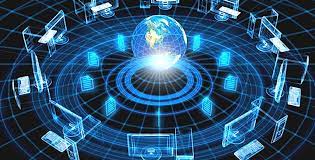A computer network is a group of computers that use a set of common communication protocols over digital interconnections for the purpose of sharing resources located on or provided by the network node. Example of a network is the Internet, which connects millions of people all over the world and the interconnections between nodes are formed from a broad spectrum of telecommunication network technologies, based on physically wired, optical, and wireless radio-frequency methods that may be arranged in a variety of network topology.
Types of networks:
- LAN(Local Area Network)
- PAN(Personal Area Network)
- MAN(Metropolitan Area Network)
- WAN(Wide Area Network)
Features Of Computer network:
- Communication speed.
- File sharing.
- Back up and Roll back is easy.
- Software and Hardware sharing.
- Security.
- Scalability.
- Reliability.
Uses:
It support many applications and services, such as access to the World Wide Web, digital video, digital audio, shared use of application and storage servers, printers, and fax machines, and use of email and instant messaging applications.
Benefits of networking:
- Strengthen business connections. Networking is about sharing, not taking.
- Get fresh ideas.
- Raise your profile.
- Advance your career.
- Get access to job opportunities.
- Gain more knowledge.
- Get career advice and support.
- Build confidence.
Components :
- NIC
- Switch
- Cable
- Hub
- Router
- Modem
Advantages:
- Increase your productivity.
- Connects you to the Internet.
- Can store vast amounts of information and reduce waste.
- Helps sort, organize, and search through information.
- Get a better understanding of data.
- Keeps you connected.
- Help you learn and keep you informed.
- Can make you money.
Disadvantages:
- Its light policing usage promotes negative acts.
- It requires an efficient handler.
- It requires an expensive set-up.





